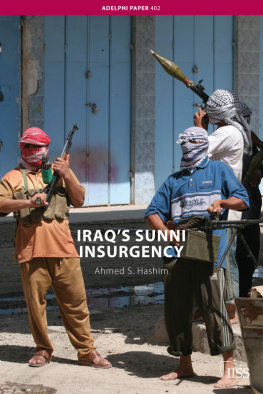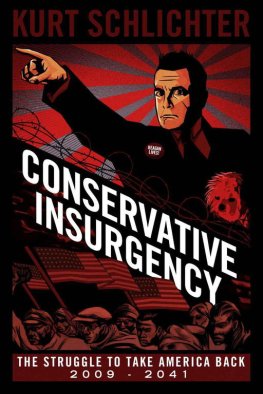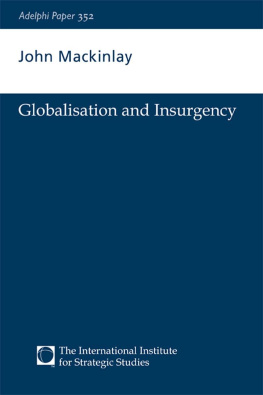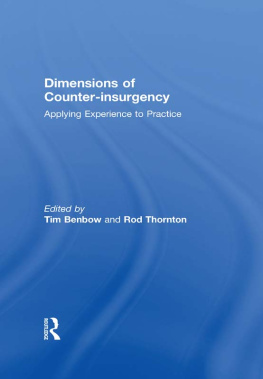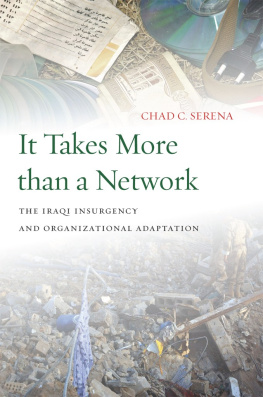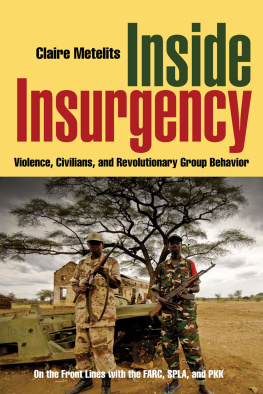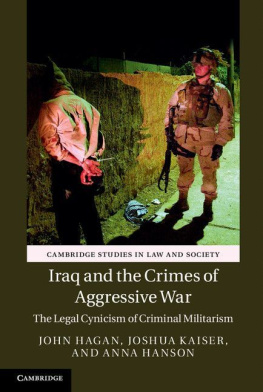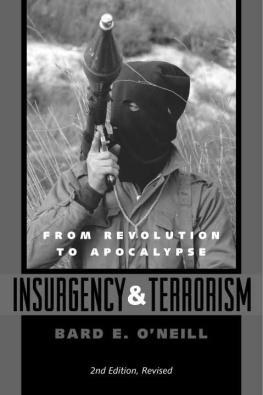The International Institute for Strategic Studies
Arundel House | 1315 Arundel Street | Temple Place | London | WC2R 3DX | UK
ADELPHI PAPER 402
First published November 2009 by Routledge
4 Park Square, Milton Park, Abingdon, Oxon, OX14 4RN
for The International Institute for Strategic Studies
Arundel House, 1315 Arundel Street, Temple Place, London, WC2R 3DX, UK
www.iiss.org
Simultaneously published in the USA and Canada by Routledge
270 Madison Ave., New York, NY 10016
Routledge is an imprint of Taylor & Francis, an Informa Business
2009 The International Institute for Strategic Studies
DIRECTOR-GENERAL AND CHIEF EXECUTIVE John Chipman
EDITOR Tim Huxley
MANAGER FOR EDITORIAL SERVICES Ayse Abdullah
ASSISTANT EDITOR Katharine Fletcher
COPY EDITOR Matthew Foley
PRODUCTION John Buck
COVER IMAGE AFP Photo
All rights reserved. No part of this book may be reprinted or reproduced or utilised in any form or by any electronic, mechanical, or other means, now known or hereafter invented, including photocopying and recording, or in any information storage or retrieval system, without permission in writing from the publishers.
British Library Cataloguing in Publication Data
A catalogue record for this book is available from the British Library
Library of Congress Cataloging in Publication Data
A catalogue record for this book is available from the Library of Congress
ISBN 978-0-415-46655-4
ISSN 0567-932X
Introduction
The purpose of this Adelphi Paper is to trace and analyse the onset and course of the Sunni insurgency in Iraq from 2003 to the end of 2008. The paper provides an overall assessment of the insurgencys causes, evolution, goals, strategies, internal rivalries and structural weaknesses. However, given the dynamic nature of politics in Iraq, it is not clear that any firm and final conclusions or lessons can be drawn at this juncture. The paper addresses the US counter-insurgency campaign only in terms of the role it played in promoting Sunni resistance in the early years, and does not examine whether the US military surge implemented in early 2007 contributed to the diminution of violence in Iraq by late 2008. Nor does it address in detail the roles of Iraqs other ethno-sectarian communities particularly the Sunni but non-Arab Kurds who make up approximately 18% of the population, and the Shia Arabs who comprise the majority of the population at around 60% whose attitudes towards the Sunni insurgency have been either ambivalent or hostile. Indeed, the lack of support from or participation of these two large communities is a key factor in ensuring that the insurgency did not emerge as a genuine national- liberation struggle.
In this study, the term insurgency is used to mean conflict between a regular or conventional military and an irregular force that is incapable of facing the former in force-on-force fighting. Irregular forces have to find other ways to match their adversary. In practice, this means that insurgents use guerrilla tactics, defined as hit-and-run attacks on regular forces
Iraq: A History of Violence
Following the terrorist attacks of 11 September 2001 on the United States, and the subsequent emergence of the Iraqi insurgency, a number of analysts and policy observers in the West began to point to a new Arab way of war, an Islamic or even an Iraqi way of war.
Mesopotamia, as Iraq was known before the 1920s, has always been a problem for its rulers and for foreign powers. The insurrectionary propensities of Iraqs indigenous inhabitants are rooted in the countrys history, which has been punctuated by tribal revolts and insurgencies against any centralising tendencies on the part of whatever government was in charge. One of the more famous historical examples of a frustrated ruler dealing with Iraqs fractious people occurred centuries ago, during the reign of eighthcentury Umayyad ruler al-Walid I, when, in a speech well known in Iraq and the wider Arab world, governor of Iraq al-Hajjaj ibn Yusuf al-Thaqafi sternly declared before the obstreperous notables of Kufa: I see heads before me that are ripe and ready for the plucking, and I am the one to pluck them, and I see blood glistening between the turbans and the heads.
Despite their reforms, which also included the introduction of secular education, more rational and modern administrative practices and conscription, the Ottomans made no real effort to create a sense of a Mesopotamian state or nation; indeed, the Kurds were left to their own devices in the inhospitable and mountainous north. The Shiites were viewed with distaste, a sentiment they fully reciprocated. Furthermore, their integration into the state was well-nigh impossible as the Ottomans viewed them as a front for Shia Iran, the enemy next door. As for the Shiites themselves, their clerics who held a great deal of power warned their flock not to attend the secular education system that the Ottomans had established.
The British seized Mesopotamia from the Ottomans at the end of the First World War for strategic and economic reasons.
After the revolution of 1958 ended the monarchical period, a newly republican Iraq faced considerable discontent among the minority Kurdish population in the north. From the early 1960s to the mid 1970s, much of the Iraqi armed forces were geared to fighting a brutal and fruitless campaign against Kurdish guerrillas (the peshmerga). The Kurds were defeated in a major offensive after Iran withdrew support and sanctuary as a result of a deal with Iraqi strongman Saddam Hussein in 1975. Benefiting from substantial oil revenues, Saddam implemented a plan between 1975 and 1980 to transform the Iraqi armed forces from a counter-insurgency force into a powerful conventional military. Equipped with high- quality equipment from the Soviet bloc and from some Western nations, the Baathist regime launched what it hoped would be a short and victorious war against the disorganised forces of Iran in September 1980. Saddam feared greatly the demonstration effect of Ayatollah Khomeinis revolution on Iraqs own Shia population; he also thought that a quick, successful war against the generally disliked Persians would cement his leadership among the Arabs of the Gulf and within the wider Arab world. The Iraqis were, however, inept warriors, lacking in flair, innovation and decisiveness. Initially, they faced guerrillas and militias in Irans Khuzestan province who offered stiff resistance. Later, they confronted a more innovative and flexible foe in the revitalised Iranian regular forces and the Islamic Revolutionary Guard Corps. The Iranians decisively defeated the Iraqis in 1982. Iraqi forces withdrew to their own territory and prepared to sue for peace. Khomeini was, however, determined to overthrow Saddams regime, and moved to continue the conflict. A bloody war ensued, characterised by brutal infantry assaults and massive artillery barrages. In the end, Iraq prevailed due to the superiority of its military resources, support from the international community and sheer exhaustion on the part of Iran.

